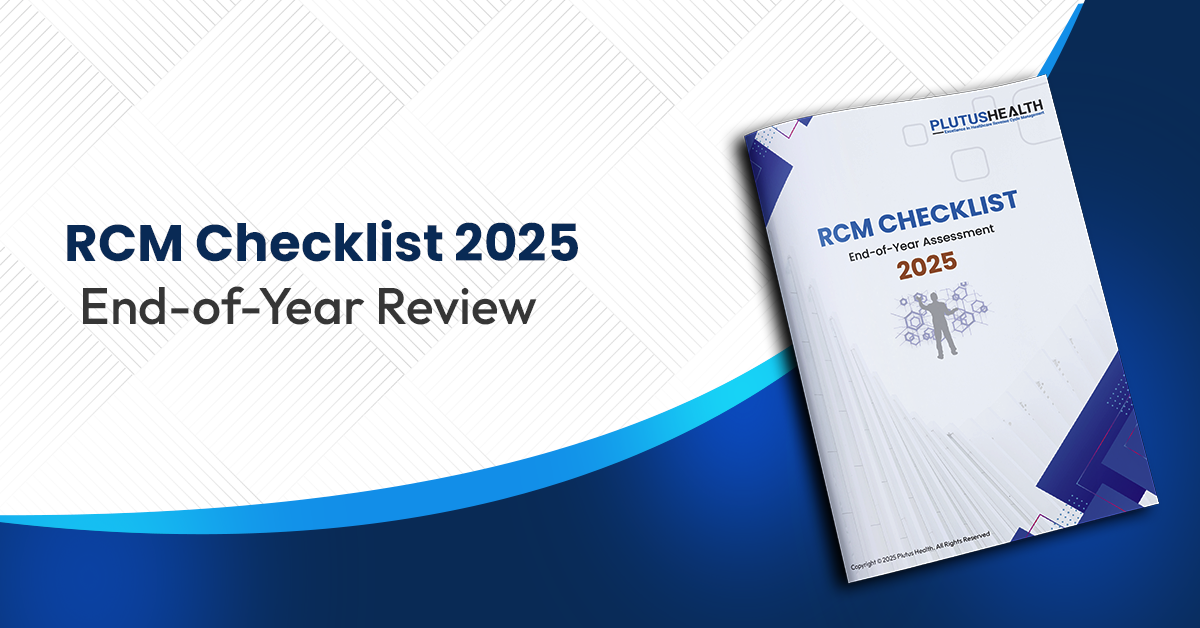Prior Authorization in Healthcare: Overview, Purpose, Process
Prior authorization (PA) is the most used term in the medical RCM industry in recent times. It is an important process in the healthcare RCM. Due to errors in prior authorization, $ 291k got written off, and charges of over $21 million got denied. Prior authorization is important as insurance payers must confirm if the prescribed procedure or pharmaceuticals are approved. Payers may not support few medical tests or treatments. Healthcare providers should wait until they obtain permission before taking future steps.
Prior authorization has a lot of processes affecting payers, patients, and providers. This blog will give you an in-depth insight into prior authorization, why it is important, how to avoid prior authorization delays, and much more.
In this article:
- What is prior authorization?
- Why do health insurers require prior authorization?
- What are the ways to do prior authorization?
- How do I automate prior authorization?
- How do you handle authorization denial?
- What are the common prior authorization hurdles?
- Tips to Minimize Prior Authorization Delays
Prior authorization or preauthorization is a process used by healthcare insurance companies to verify if certain medications, procedures, and tests prescribed by a healthcare provider are needed for the patient. Without pre-approval, payers won’t reimburse you for the treatments you offer the patients. Payers believe that less expensive treatment is sufficient rather than a high-ticket procedure.
“Prior authorization increases collections and reduces denials. It also helps healthcare providers to enhance their focus on patients”, says Gett Johnson, a specialist in healthcare RCM.
Payers advise patients to the lower-cost sites of care or physicians. In medication, PHMs (pharmacy benefit managers) should choose a less expensive drug before moving toward an expensive option. The decision to reject or approve a particular process completely depends on the payer, and your reimbursement completely depends on the decision taken before providing the treatment.
- Is the drug or service required?
- Is the recommended drug or service necessary for the situation?
- Does the prescribed drug or service make financial sense?
- Is there a duplicate service suggested?
- Is the recurring service benefiting the patient?
If you take prior authorization on time, you can keep a check on healthcare costs. There are many reasons that a payer needs prior authorization.
Is the drug or service required?
Payers check if the drugs or services requested are truly needed as per the patient’s condition. If insurance payers feel that the services or drugs prescribed are unnecessary, they reject the authorization.
Is the recommended drug or service necessary for the situation?
Payers check if the recommended drug or service is necessary for the current situation. There are chances that services or drug suggested is necessary for the medical problem in general but not for the patient.
Does the prescribed drug or service make financial sense?
Payers advise that the drug or service the patient prescribes must be economical. If a cheaper drug is available for the treatment, the doctor must mention the reason why the expensive drug was suggested. The healthcare provider must take approval before suggesting the drug. The same applies to the medical process. For example, if the diagnosis could be detected in an X-ray and the doctor suggested MRI, there must be a solid reason for the prescription.
Is there a duplicate service suggested?
Duplicate service arises if multiple specialists are involved in treating a single patient. If a particular scan is prescribed by a specialist one week back and the second specialist suggests the same scan, the payer might not authorize the second scan unless the specialist gives a strong need.
Is the recurring service benefiting the patient?
Suppose a patient has taken physiological sessions for the last three months, and the doctor requests authorization for new sessions for the next three months. In that case, payers check if the therapy is helping the patient. If the patient makes slow and consistent progress, additional months would be easily pre-authorized. If the sessions are making the therapy worse or not helping the patient, the future treatment might not be pre-authorized. Healthcare providers must be able to properly explain why the treatment would help the patient in the coming months.
“Payers have a list to determine which drug or treatment are covered in insurance plans and require PA. You should be in contact with payers to know what’s there in this list to avoid pre-authorization denials or delay in payment.”
The first and biggest criterion for prior authorization is that you should be an in-network provider of the payer. If you are not an in-network provider, the patient must take prior authorization for the prescribed treatment. If the prior authorization is not taken, either the payment is completely lost, or you should be able to get collect it from the patient. You should thoroughly review the patient's documents and take authorization for services, treatments, and supplies. Connect with the payer before admitting the patient and give all the details requested to ensure the claims don't get denied due to prior authorization.
Steps in prior authorization
- Check if the treatment or service requires prior authorization
- Discover who locates the patient plan data and manages the benefits
- Understand how to submit patient data, as all payers have different rules
- Properly send service and patient data
- Wait for the payer's response and provide follow-up data if required
- Communicate the pre-authorization results to the team and patients
- Reattempt the denied authorization
Preventing authorization denials and providing quality care to patients is not easy. Payers have significantly increased the pre-authorization requirements making the providers struggle to provide quality care to patients and collect reimbursements.
The manual prior authorization process is time-consuming and prone to errors. Hence, healthcare providers are moving towards automation. Automation in prior authorization can solve submission, retrieval, and determination errors caused by the manual process. Here is how you can automate your prior authorization process.
“Automation in the healthcare RCM process gives you exceptional results in minimum time. You can reduce manual errors and create a precise process.”
You can leverage RPA (robotic process automation) bots to automate prior authorization. Here are the steps to automate prior authorization:
- Quality assurance is the first step of prior authorization. Automate quality assurance and measure patient data before submitting prior authorization. Audit 100% of the patient registrations to detect errors. Alert the staff with the detected errors along with the recommended solutions. Automate the re-audits after any changes. Use pattern reorganization to detect common errors.
- You can automate eligibility verification and benefits mapping. RPA can analyze the data and detect errors before they impact the revenue cycle. Do automated benefit verification on 100% of accounts. Automation can help to detect threshold alerting.
- Arguably is the most time-consuming and critical step in prior authorization. Healthcare providers dedicate significant resources and time when authorization is required. Automation reduces the time at the fax machine and the time spent on the phone. Automation helps to determine if authorization is required according to the need of payer guidelines.
- Automation reduces the need to check the authorization status manually. It can automate responses, including denial numbers, staff work queues, or instructions. Automation reduces the time of waiting and holding for manual updates in spreadsheets. It aids staff in dedicating time to improving approvals and accuracy.
80% of the denials happen due to improper or no authorization requests. Medical billers and coders do their best to submit clean claims while the payers keep increasing their procedures, needing prior authorization.
Claim denials due to pre-authorization can be expensive to healthcare providers and should handle on priority. Payers demand pre-authorization within fourteen days or before the service is rendered. Requests after the allocated period are known as retroactive authorization. Here are some of the best practices to reduce claim denials due to prior authorization.
Include prior authorization in your patient eligibility check process and verify if the procedure, order, referral, or order need authorization. Appeals are the most common ways to handle denials. Only 1% of the appeals for denials got approved by the payers.
Documentation is a critical aspect of appealing for denied claims. Denial management demands experienced professionals who know the latest payer guidelines and can appeal at the right time with perfect documentation.
No matter how precisely your experienced medical billers and coders submit the claims, there will be few denials. You should always be prepared for denials as it eradicates emotion from the process. Allocate the time, budget, and resources to resubmit the documents and appeal to streamline your denial management process.
Physicians and billers need to work together to eliminate denials. Incorrect procedural codes are the primary reason for pre-authorization denials. For instance, if you schedule a particular treatment that does not require prior authorization and give the patient some other treatment, the claims will get denied. It is not mandatory to give all the treatments that you took prior authorization, so you should take authorization from payers and verify the codes before submitting claims.
Guidelines are issued to simplify the process and make it easy for payers and providers. Following guidelines by the payer is the most effective way to eliminate denials or get pre-authorization. Before submitting claims, you can ask the payers about their procedure and document requirements.
Cost management
You should always try to prescribe low-price drugs or services wherever possible. High-price drugs or services need prior authorization.
Medical necessity questions
Payers often ask if the suggested service or drug is needed for the patient, and you should be able to mention the necessity.
Administrative errors
If the administrative staff applies for prior authorization with clerical errors, miss spelling, or wrong code, it results in denied pre-authorization request.
Missing details
If you give insufficient information while submitting a prior authorization request, it causes authorization denials.
Procedural errors
Payers demand PA for a non-emergency test. If the patient does the test without authorization, payers might reject it even if required. So, follow the process of PA.
Provider did not take a step approach
Payers often demand patients should try a less expensive drug or service before going for expensive ones. If this step approach is not followed, it leads to PA denials.
Prior authorization is the most time-consuming process in medical RCM. Healthcare providers do not have sufficient time and resources to do regular prior authorization. Hence, they lose a considerable amount of revenue. Delays in prior authorization also lead to interruptions in patient treatment. Here are the tips to minimize prior authorization delays:
- Find low-priced alternative drugs which are equally effective for the patients. By doing so, you can skip the prior authorization process.
- Prescribe generic drugs that do not require prior authorization.
- Create a list of processes and drugs that need prior authorization. Give the list to your staff and add it in your EHR system so that you get alerted for the services that require prior authorization.
- Follow all the guidelines given by the payers while submitting claims.
- Provide education to the staff and patients about pre-authorization. Education can reduce the payer’s anger and staff frustration while taking authorization.
- Dedicate your time and attention to documentation and follow the standard guidelines.
- Create a prior-authorization team so that you are free to focus on patients and your staff become experts in the authorization process.
- Leverage technologies like AI, RPA, and ML wherever possible to reduce time and manual errors.
- If your request gets denied, appeal again and keep track of appeals until you get the desired result.
These tips are tried and tested by our experts. If you do not have sufficient time and resources to conduct prior authorization or your request is denied most of the time, despite following all the processes, consider partnering with third-party service providers like Plutus Health. We are a team of professionals who offer medical billing and coding services to healthcare providers around the US. We offer extensive prior-authorization services using a combination of our expertise and cutting-edge technology. Connect with our experts to learn more about our end-to-end RCM services.
Liked the blog? Share it
FAQs


ABA providers are grappling with high staff turnover (up to 65%), rising burnout, administrative overload, and stagnant reimbursement rates. These challenges directly impact care continuity, clinical outcomes, and operational performance.


Operational inefficiency costs ABA teams up to 10 hours per staff member per week, contributing to burnout, denied claims, and longer accounts receivable (A/R) cycles. These inefficiencies ultimately result in reduced revenue and patient dissatisfaction.


Burnout leads to costly turnover, lower client retention, and decreased productivity. Recruiting and replacing a BCBA or RBT can cost up to $5,000 per hire, plus months of lost revenue and disruption to morale.


High-performing ABA organizations invest in clear career pathways for BCBAs and RBTs, align compensation with market benchmarks, and foster peer-led mentorship, flexible schedules, and wellness programs.


Automation tools like Plutus Health's Zeus streamline eligibility verification, denial management, and billing, reducing manual workloads by 5–10 hours weekly per clinician and improving clean claim rates by 95%.


Outsourcing revenue cycle management can improve collections, reduce denials by up to 30%, and free clinicians from billing-related admin tasks, resulting in better client care and financial outcomes.


One $200 million ABA network partnered with Plutus Health to automate eligibility and accounts receivable (A/R) processes. The result: $2M reduction in legacy A/R and a 97% Net Collection Rate.


By improving operational efficiency, investing in technology, and ensuring workforce stability, ABA leaders can align outcomes with reimbursement. Plutus Health supports this transition with scalable RCM and automation strategies.
FAQs


ABA therapy billing is the process of submitting claims to insurance or Medicaid for Applied Behavior Analysis services provided to individuals with autism or developmental disorders. It includes using correct CPT codes, proper documentation, and adherence to payer-specific policies.


Common CPT codes for ABA therapy in 2025 include:
- 97151 – Assessment and treatment planning
- 97153 – Direct therapy with the patient
- 97155 – Supervision and modification of behavior plan
- 97156 – Family adaptive training
- Always check with payers for any annual changes.


To bill Medicaid for ABA services, providers must ensure credentialing is complete, services are pre-authorized, and claims use the correct codes and modifiers. Medicaid requirements vary by state, so always follow state-specific billing rules.


Common ABA billing mistakes include:
- Incorrect or missing CPT codesplan
- Lack of documentation or treatment
- Uncredentialed providers rendering services
- Submitting duplicate or late claims


Without proper credentialing, providers can’t get reimbursed. Insurance and Medicaid require that BCBAs, RBTs, and organizations are credentialed and contracted. Delays in credentialing often cause revenue losses and claim rejections.
FAQs


CMS proposes a 2.4% increase in Medicare ASC payment rates, contingent on meeting ASCQR quality reporting requirements. Plutus Health helps ASCs meet these compliance benchmarks by integrating quality reporting data into RCM workflows, ensuring eligibility for full payment updates.


The ASC Covered Procedures List will expand by 547 procedures, including cardiology, spine, and vascular surgeries. Plutus Health supports expansion into new service lines by customizing RCM processes for high-acuity procedures, minimizing claim denials during the transition.


Site-neutrality narrows the payment gap with hospital outpatient departments, enhancing ASCs' cost-efficiency appeal. Plutus Health helps leverage this advantage in payer negotiations by providing performance dashboards and cost-justification analytics to secure stronger reimbursement terms.


Complex procedures increase denial risk and slow cash flow. Plutus Health's automation-first RCM model delivers 95%+ clean claim rates, reduces A/R days, and safeguards margins, even as your case mix becomes more complex.
FAQs


A hybrid RCM model combines in-house tasks like scheduling, intake, and patient communication with outsourced billing support for claims, denials, and A/R follow-up. Plutus Health enables this model with automation and expert teams.


Frequent CPT code updates, variable session lengths, high no-show rates, and sensitivity around patient collections make behavioral health billing uniquely challenging. Hybrid RCM helps strike a balance between compliance and patient care.


Tasks requiring patient interaction—like intake, eligibility checks, copay collection, and documentation—are best kept in-house, while backend processes can be outsourced.


Outsourcing denial management, claims scrubbing, and payment posting improves clean claim rates, reduces A/R days, and scales capacity without adding staff.


Plutus Health delivers 97%+ clean claim rates, AI-powered denial prediction, and 48-hour claim turnaround. Our hybrid RCM solutions provide behavioral health CFOs with visibility and control, while enhancing financial performance.
FAQs


Payment complexity, high out-of-pocket costs, increasing denials, and value-based care requirements are pushing providers toward more transparent, tech-supported payment systems.


Patients now act like consumers. They expect clear cost estimates, simple bills, digital payment options, and flexible financing.


AI, automation, and digital tools streamline estimates, reduce denials, support payment plans, and allow faster collections through mobile and online payments.


Complex billing questions, insurance confusion, and financial stress require a compassionate approach. Advocates guide patients and protect trust in clinical care.


Plutus Health supports providers with AI-driven denial prevention, predictive analytics, digital payment tools, patient financing, and a seamless platform, such as AnodynePay.

















































